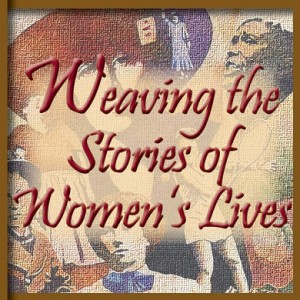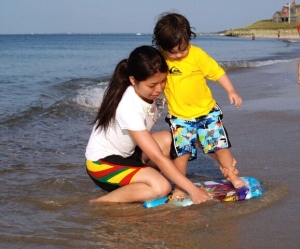March is National Women’s History month. Before the month of March is behind us, I would like to acknowledge and celebrate the achievements of a woman I only became familiar with shortly after I had my first child. She is the Italian physician, Maria Montessori. She was the first woman to graduate in medicine from the University of Rome. I would like to acknowledge not only her achievements but, also the challenges she faced in the field of medicine and education. As a result of her passion and perseverance, she has helped shape the world with her contributions to education and made a significant impact on childhood experiences. Her theories have directly impacted my children’s multilingual development as well as my perspective on language learning.
This year’s theme “Weaving the Stories of Women’s Lives” presents the opportunity to weave Maria Montessori’s story of her achievements and challenges into what so many of us consider significant in our children’s lives: the ability to become bilingual and/or multilingual.
How I Discovered Maria Montessori
A book titled: BASIC MONTESSORI- Learning Activities for Under-Fives, by author David Gettman, caught my eye after I had my first child. It seemed pertinent and practical as well educational since I had heard of the Montessori method but had never taken the time to learn about it. I bought it, and although the book does not directly address the acquisition of a second language, it proved to be an invaluable tool for me in raising my boys multilingual. This book explains Montessori’s theories regarding language acquisition and learning as well as her revolutionary ideas about early intellectual development. Before I knew it, I found myself applying Montessori’s theories and ideas to the acquisition of a second language. I got most of my ideas, tools and tips from this book. Maria Montessori became my family language coach by default!
Maria Montessori
Maria Montessori lived from 1870-1952. Although women in Italy were granted very few educational opportunities during her life-time, Montessori was given special opportunities because of her proven intellect. She was permitted to attend an all-boy technical school which ignited her interest in pursuing a career in engineering. When she encountered obstacles in such pursuit, she settled for becoming a doctor instead. During her first year in medical school, she was shunned for being a woman. When her colleagues discovered her brilliance and insight, she became a welcome addition to the student body. After graduating, she practiced surgical medicine for 10 years, she helped other women through their higher education challenges, and campaigned for equal rights for all women. She studied psychology and began working with young children in mental institutions. She ultimately turned her thoughts and efforts to the education of the ordinary child. After 2 decades of working with young children, she developed her theories.
She encountered additional challenges in the field of education when “at the zenith of her public acclaim, in the United States of America, Montessori’s theories and method of education rather suddenly fell out of favour among some leading professors of education [in the USA] as well as elsewhere in the English-speaking world.” Shortly after her death, however, there was a resurgence of popularity of Montessori schools in the USA, that continues to date.
Maria Montessori’s Theories
Very early in chapter 1, the author emphasizes that the most basic principle in Montessori’s theory of education is that the learning capacity of a young child is fundamentally different from that of an adult. To demonstrate this difference, Montessori used as an example, a learning task attempted by both adults and young children – learning to speak a new language. This is not news to any of us, but as soon a I read this passage, I began reading the text in a different light.
My spin on Montessori’s theory was: if a young child effortlessly learns his first language so perfectly by living in and absorbing the surrounding cultural environment, then the same must apply with respect to the acquisition of a second or third language. I chose to follow Montessori’s recommendations with respect to materials, practical activities and environment and never looked back. I purchased the recommended materials outlined in the book for the appropriate age and developmental stage of my children and presented the activities in the first target language (Spanish). Later, when we participated in the Au Pair Program, the au pairs did the same, but in the second target language (German). The Montessori activities intrigued and engaged my boys and since we carried them out in target languages, they effortlessly acquired their language skills in their second and third language very early on. My take on Montessori’s theory proved to be successful for us!!
Highlights from the Book
Some of the take-aways from this book that became part of my family’s language plan are listed below. As you will note, I have mentioned these points in my previous posts: Tips and Top 10 Tools Part 1 and Part 2 and have already provided my readers with examples of some non-Montessori tools that I used to involve the senses, incorporate music, and make language connections.
- Learning occurs physically, mentally and sensorially
- The contribution of music to mental growth is as crucial as that of oxygen to the brain
- Learning is essentially connecting; children learn concepts from working with materials
In upcoming posts, I will share my kids’ favorite Montessori toys and how we utilized them. Stay tuned for My Montessori Favorites!
Have you used Montessori materials to teach your children a second or third language? What was your experience?
All of the information about Maria Montessori I outlined in the blog post above is from Desmond Swan’s excellently written Foreword and from Chapter 1 of David Gettman’s book titled: BASIC MONTESSORI – Learning Activities for Under-Fives.




